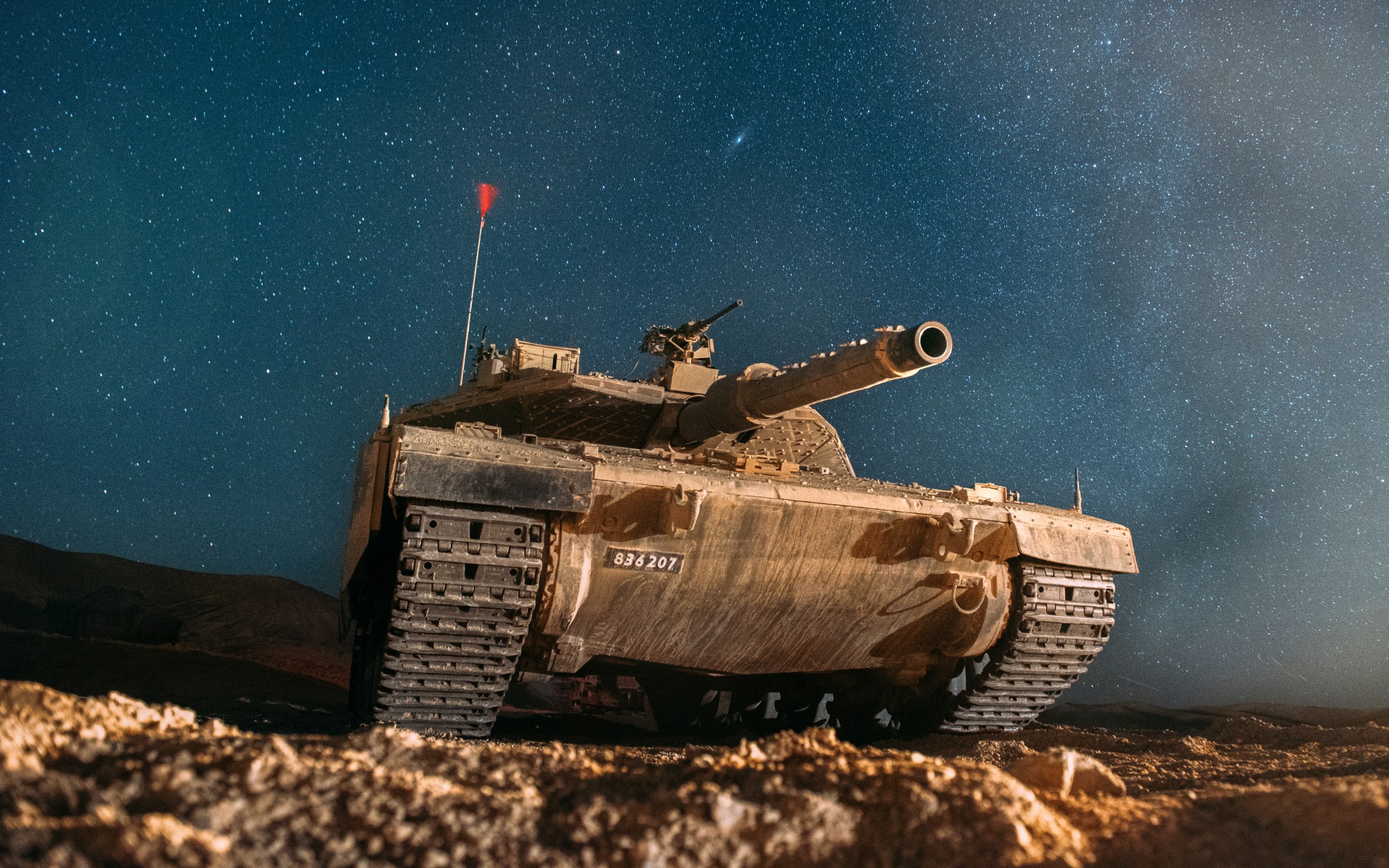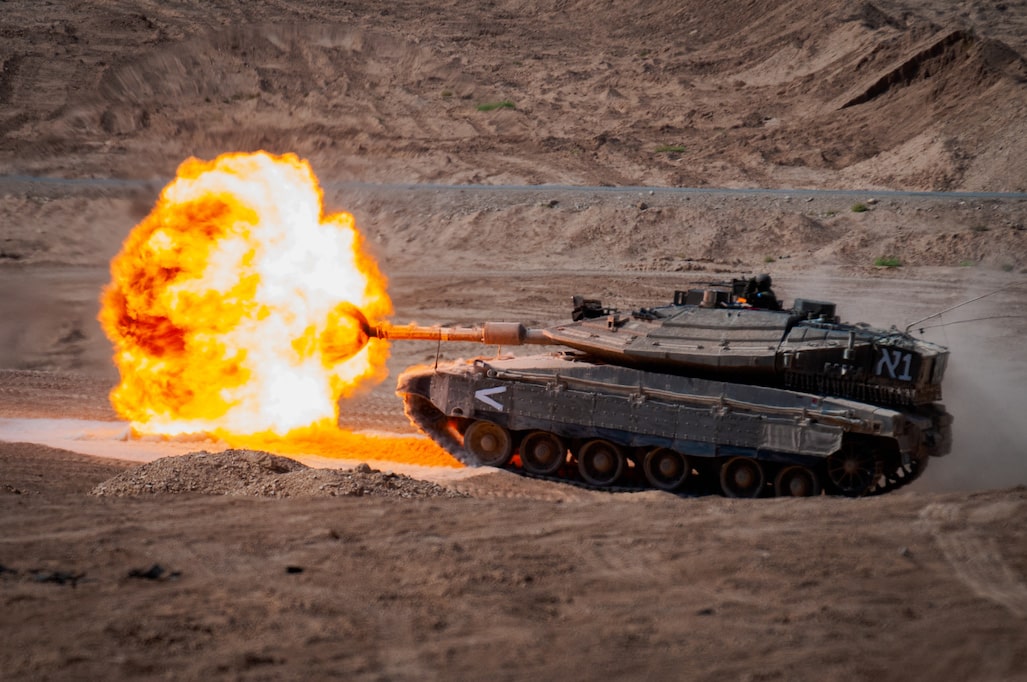Israel's New Spectacular Merkava V Tank is Heading to War
The Merkava series of tanks have been in service with the Israel Defense Forces (IDF) since the late 1970s, and it has been steadily upgraded and improved. The latest version, which entered service earlier this year, the Merkava V, is now being deployed to Gaza.
The Merkava series of tanks have been in service with the Israel Defense Forces (IDF) since the late 1970s, and it has been steadily upgraded and improved. The latest version, which entered service earlier this year, the Merkava V, is now being deployed to Gaza.

It is unclear how many of the newest Merkava tanks are currently being employed in the fighting, but following the October 7 Hamas terrorist raid in southern Israel, the IDF massed a significant number of its tanks and other vehicles. The move into Hamas-controlled Gaza has been slow and cautious, and this week the IDF surrounded Al-Ahli Baptist Hospital, the largest medical facility in Gaza City.
Merkava Tank: A "Chariot" of Firepower
Designed by General Israel Tal following the armored clashes of the Yom Kippur War and after the failure to purchase Chieftain tanks from the United Kingdom, the Merkava – which means "Chariot" in biblical Hebrew – ensured that the Middle Eastern nation wouldn't need to be dependent on foreign armored vehicles. The goal of the domestic tank program was to further create a platform that could take on Soviet tanks that were in service with many of Israel's Arab rivals.
The resulting Merkava Mk I was laid out in a rather unorthodox manner, at least compared to contemporary Western and Soviet tanks, featuring a design more akin to some infantry fighting vehicles. Instead of having the engine at the rear, it was moved in front of the crew compartment, with the turret placed further back on the chassis.
The Merkava Mk I entered official service in 1979, and it was used extensively in the 1982 Lebanon War, where it fought against Soviet-made Syrian T-72s in the Bekaa Valley to great success. Even as it was seen as a more than capable MBT, the IDF has continued to upgrade and enhance the tank, which has most recently been produced as the Merkava IV, a tank that has earned the reputation as being one of the best in the world.
Development began on Mark IV in the late 1990s, and it entered full production in 2004. It was noted for being slightly larger than the Merkava III, which has been in service with the IDF since 1990. That variant was designed as a "smart tank" with a multitude of sensors and a task computer, which will present all information to both the crew inside the tank as well as the other tanks and vehicles present in the field.
The Merkava IV was further equipped with an all-electric turret developed by Elbit and subsidiary El-Op; and it features a single commander’s hatch – a design decision that was meant to provide additional protection to the roof with a passive armor system. In addition, the turret – which is mounted to the back side of the hull – is equipped with chains that hang down vertically to help detonate any anti-tank devices with a High Explosive Anti-Tank (HEAT) warhead before they can make an impact with the tank's primary armor.
Even as it was considered among the best, Israel has sought to improve upon its design.
Ready for Lightning Warfare
The Merkava Mark V – also known by the Hebrew "Barak," which translates to "lightning" in English – had been in development for five years. The Israel Defensive Ministry has described it as the "fifth generation Merkava battle tanks," and it was only recently delivered to the 52nd Armored Battalion of the 401st Brigade.

The Barak was developed jointly by the Defense Ministry's Armored Vehicles Directorate and the IDF's Ground Forces and Armored Corps and includes systems developed by several Israeli defense firms, including Elbit Systems, Rafael, and the Israel Aerospace Industries' Elta subsidiary, among other companies, The Times of Israel reported.
Research into the next generation of Merkava began in 2014, while its formal development started in 2018, with the first prototypes rolled out two years later.
Revolution on the Battlefield
The new tanks are also reported to be equipped with "a wide infrastructure of reliable sensors" to detect targets, and intelligence information can be shared between the tank and other parts of the military, which the IDF has claimed could be "a real revolution on the battlefield."
"The Barak tank will strengthen the capabilities of detecting enemies and will enable fighting against an enemy with a reduced signature and in all combat scenarios, on the current and future battlefield, against the entirety of threats that exist for the maneuvering force," the ministry noted.
The Mk V is equipped with day/night cameras providing a 360-degree view around the hull, along with the Trophy Active Protection System (APS), which was designed to counter the most advanced anti-tank missiles, rocket-propelled grenades (RPGs), anti-tank rockets, and high-explosive anti-tank (HEAT) rounds. TROPHY creates a neutralization bubble around the vehicle. It rapidly detects, classifies, and engages all known chemical energy (CE) threats – including recoilless rifles, ATGMs, AT rockets, HEAT tank rounds, and RPGs.
Special Helmet For the Tank Commander
There was a time when tank crews wore helmets largely as "brain buckets" to protect them inside the armored behemoths. The IDF's latest tank helmets for the vehicle's commander – which was developed by Elbit – are similar to one a fighter jet pilot might wear, as it provides a full view of their surroundings and displays relevant information about ongoing fighting.
Elbit said the helmet, dubbed IronVision, "generates an image that enables the crew to 'see through' the vehicle's armor" and thus allows the soldier to "overcome inherent visibility limitations while improving mission efficiency and safety."
The Israeli firm also developed improved sights, as well as more advanced night vision for the Barak tanks, compared to previous Merkava models. It further provided a new touchscreen-based user interface for the tank, and it is able to display relevant information to each crew member. Those systems could enable soldiers to fight while the tank is completely sealed, with no hatches open, unlike in previous Merkava models where the tank commander would either be vulnerable to sniper fire or be less able to see his surroundings.
Though the IDF and the ministry have touted these features, we will now see how well the latest Israeli Chariot of Lightning actually performs in urban warfare.
Author Experience and Expertise
Peter Suciu is a Michigan-based writer. He has contributed to more than four dozen magazines, newspapers, and websites with over 3,200 published pieces over a twenty-year career in journalism. He regularly writes about military hardware, firearms history, cybersecurity, politics, and international affairs. Peter is also a Contributing Writer for Forbes and Clearance Jobs. You can follow him on Twitter: @PeterSuciu.
Images: All Images are Creative Commons.


